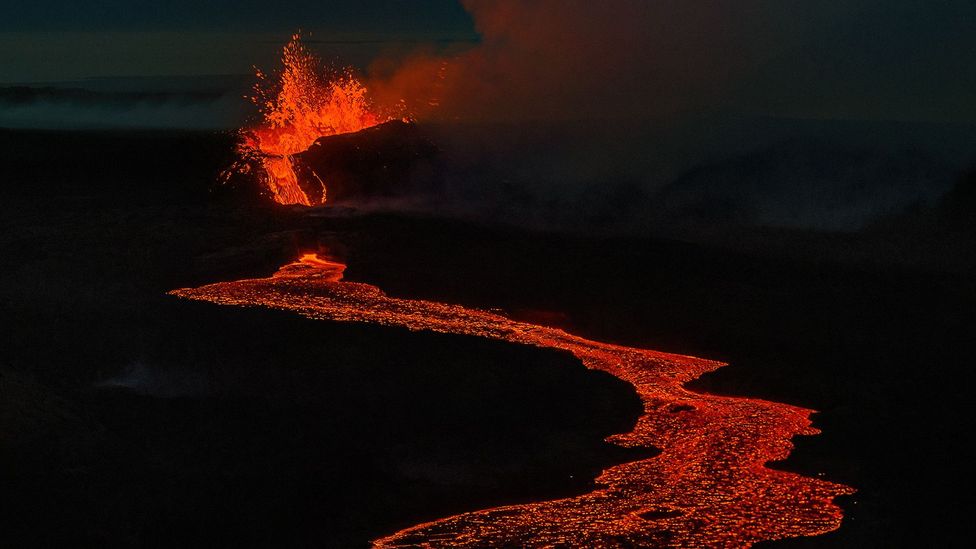On the afternoon of 10 July, the Earth cracked open. Three fissures appeared north-east of the base of Litli-Hrútur – a small mountain on the Reykjanes Peninsula in south-western Iceland – and began to spew molten lava high into the air accompanied by plumes of gas.
Iceland's latest eruption wasn't a total shock; Litli-Hrútur (which translates to "Little Ram") is part of the Fagradalsfjall volcanic area that erupted in March 2021 and August 2022 after a break of almost 800 years, and the surrounding area had been shaking for several days with more than 12,000 earthquakes recorded prior the start of the eruption.
The fissures initially stretched more than 1km, spluttering three lines of red-hot lava into the air. Two of the fissures had closed by the following morning, with the lava then forced out from a single elongated active cone. This quickly grew to a large crater as the lava accumulated, creating what some are describing as "Earth's newest baby volcano". In just one week, the crater had grown to about 30m tall and continues to grow each day.
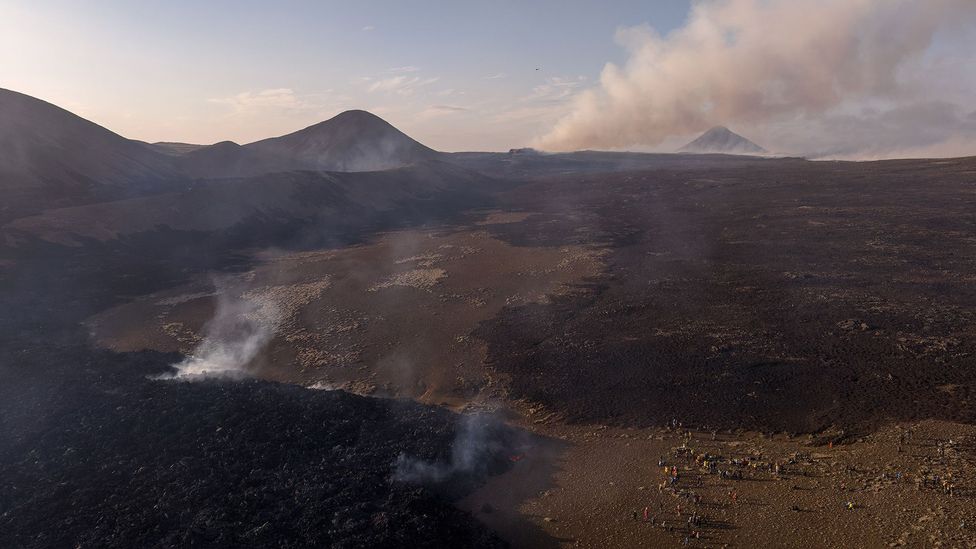
(Credit: Sophie Carr)
The lava volume that was emitted on the first night was enormous (up to 50 cubic metres per second) and travelled in all directions, resulting in the dry moss that covers this barren landscape catching alight.
Strong winds then spread the moss fires over a very wide area, and it was deemed too dangerous for visitors to the site for a few days due to a combination of gases from the volcano and noxious smoke from the moss fires. The local fire service used helicopters to directly drop two tonne batches of water on the fires as well as deliver tanks of water for local fire fighters to use at ground level. Eventually the fires were brought under control and the winds changed to a more north-westerly direction; on 17 July, a path was opened and visitors started flocking in to see this rare event up close.
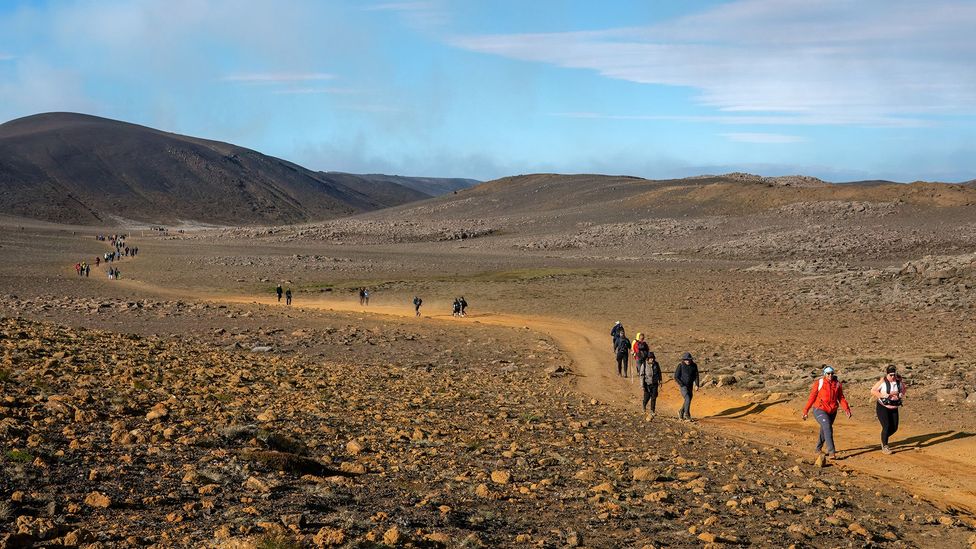
(Credit: Sophie Carr)
Access to the volcano depends on the local conditions and changes day by day; local authorities provide updates each day after they've assessed the conditions and suitability for people to visit.
At the moment, visitors are permitted to visit the site. A dedicated car park (P2) has been created; from here you have to hike or cycle 9km along a mostly flat trail to a large viewing area, though the last kilometre is rocky. Once you get there you're just 1km from the erupting crater, which you can see through a strong heat haze. It is an incredible spectacle even from this distance, especially at night when the spurting lava fountains are more visible against the darker skies (although it doesn't get truly dark here until mid-August).
The trail is currently open from 09:00 to 18:00 and the round-trip hike takes at least five or six hours, including hiking time and time spent enjoying the view. It should only be attempted by those fit enough and prepared with appropriate hiking shoes, clothing and water. There are no facilities at the site, but Search & Rescue teams are on hand in case of emergencies.
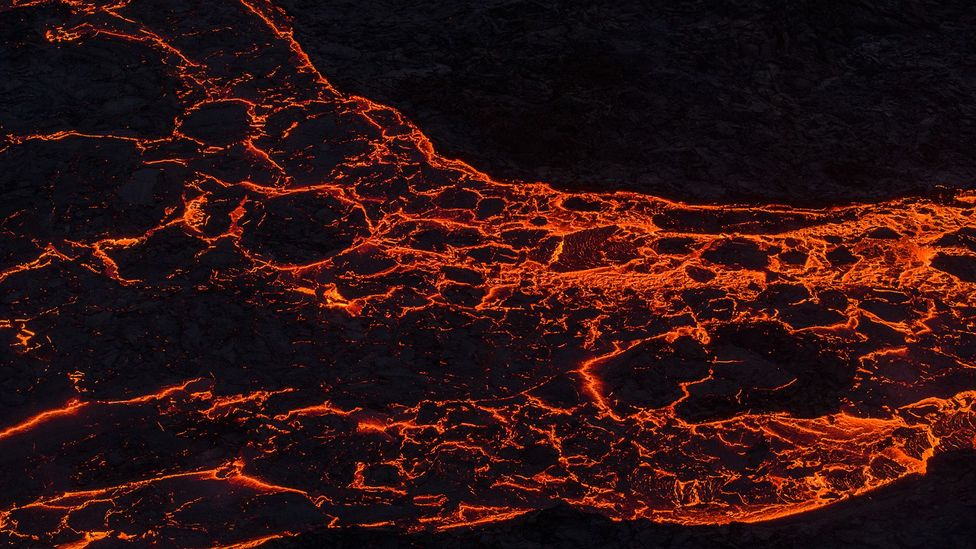
(Credit: Sophie Carr)
Access to the viewing point may change over time as the geologists need to be satisfied that no new fissures will open before allowing visitors to get closer to the crater. In the early hours of 19 July, a large chunk of the crater collapsed, pouring lava very quickly over an area to the west of the crater, highlighting the importance of respecting this danger zone. During the 2021 eruption, there were many changes in the behaviour of the lava, with new fissures opening weeks after the initial one.
When I visited the site, I met Jeroen Van Nieuwenhove, a Belgian professional photographer who lives in Iceland, at the edge of the lava field. He has been documenting the eruptions since the first Fagradalsfjall eruption in March 2021. He told me that visiting volcanic eruptions is always very special, and this year is no exception. "Seeing a new landscape being created in front of your eyes is a privilege granted to very few people," he said. "I am very happy that the eruption has happened in the most photogenic location in the area, with the picturesque pointed Keilir peak as a backdrop. Although the distance to get there is longer than in previous years and the hike is arduous, it's well worth it when you arrive."
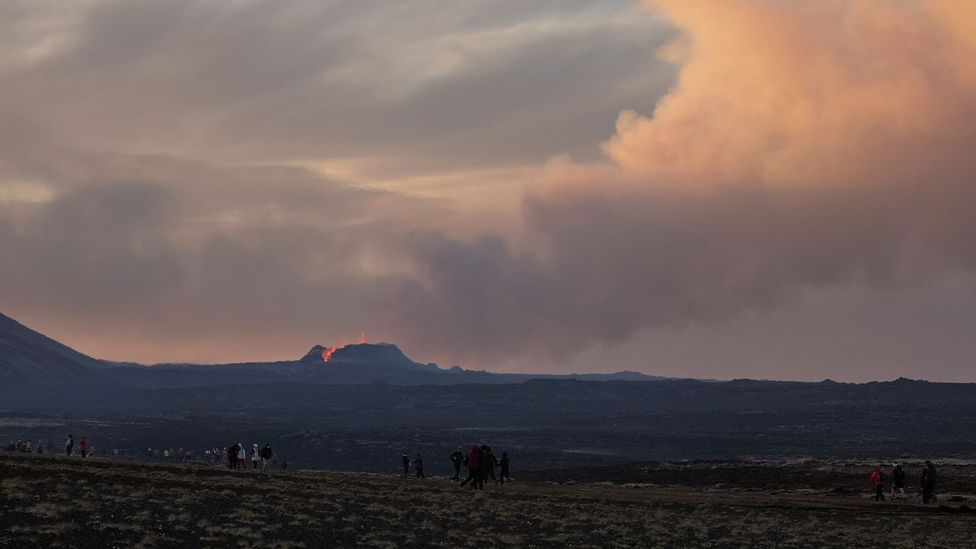
(Credit: Sophie Carr)
Laura Wainman, a PhD student at the School of Earth & Environment at the University of Leeds studying the dispersion of environmentally reactive trace elements in volcanic plumes, was on a plane to Iceland "within minutes of the eruption starting". She is collecting samples from the volcanic plume as part of her research, which focuses on understanding the composition and size distribution of particles within the volcanic plume and how they are transported in the atmosphere.
She explained that Iceland's latest eruption and creation of this new baby volcanic crater came as no surprise as the surrounding area had been shaking with strong earthquakes for six days and the magma was known to be very close to the surface. "The earthquakes, which began this year on 4 July, were caused by a new magma intrusion in the area between Fagradalsfjall and Keilir, which is just to the north-east of the previous eruption sites in 2021 and 2022," Wainman said.
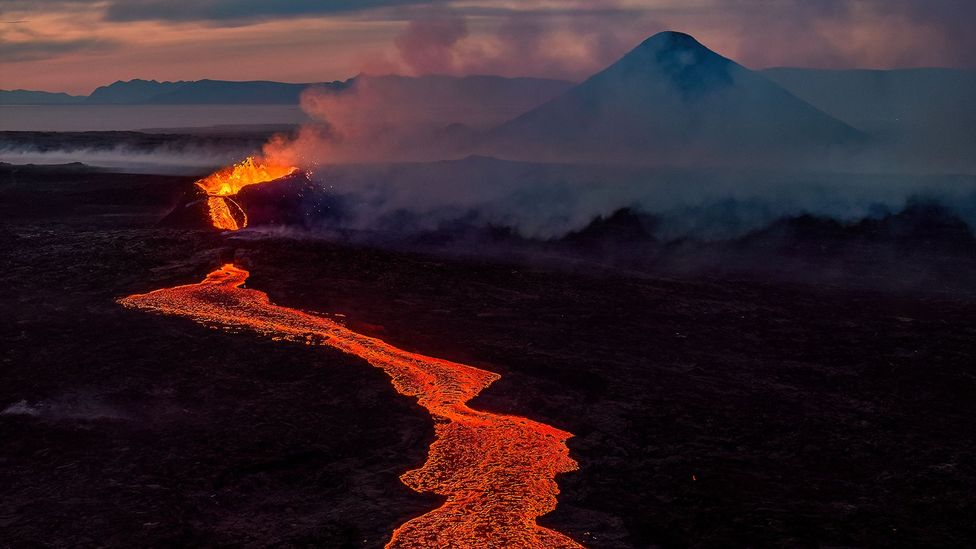
(Credit: Sophie Carr)
The slow-moving tongue of lava emitted from the crater is being slowly pushed downhill, creating majestic lava flows. There are different types of lava found in volcanic eruptions; the one here is a'a type, which is a basaltic lava characterised by a rough, brittle surface, composed of broken lava blocks called clinker. As it moves forward, chunks fall off and tumble to the ground to reveal red hot areas among the grey and black of the cooler lava. There is often the sound of eerie crackling, similar to shattering glass, as it edges forward.
"Seeing an eruption never gets any less special," said Wainman. "After we finish our sampling, we always try to take some time to sit and admire the beauty and awe of the volcano. I think it's the combination of curiosity and mild terror in the face of this massive force of nature that keeps us coming back and drives us to want to study volcanoes."
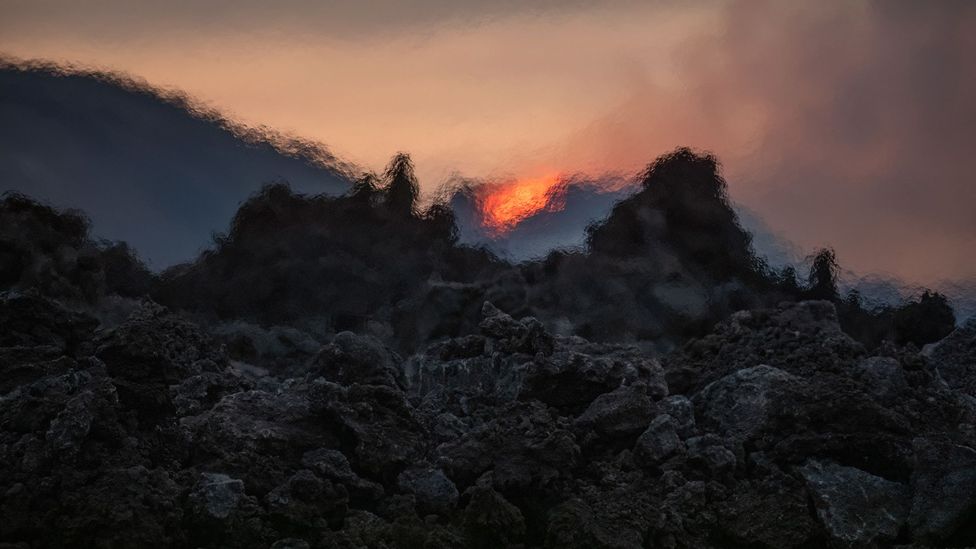
(Credit: Sophie Carr)
The baby volcanic crater continues to grow day by day as the lava is forced into the air and adds to the existing cone. The lava is now flowing at an estimated current daily volume of nine cubic metres per second, a similar amount to that of the 2021 eruption, although much reduced from that on the first night. "There's a limit to how high the crater can get before it inherently becomes unstable, so I think if activity remains high, then it's possible we'll see further events where sections of the crater wall might collapse. It's a very dynamic system but we have lots of people working on modelling different scenarios for where the lava flows might travel," Wainman said.
She also noted that there is no way to predict how long the eruption will last; the previous two lasted for six months (2021) and three weeks (2022). However, "so far, the Litli-Hrútur eruption has behaved in a similar way to the eruptions seen in 2021 and 2022," Wainman said. "At some point we will begin to see activity drop off and then we may see something like the eruption in 2021 where there were intermittent periods of activity before the eruption finally stopped. As for how long this eruption will last… we will just have to keep watching."
(Photos taken using a Canon 5DIV camera and DJI Mavic 3 Pro drone.)
---
Join more than three million BBC Travel fans by liking us on Facebook, or follow us on Twitter and Instagram.
If you liked this story, sign up for the weekly bbc.com features newsletter called "The Essential List". A handpicked selection of stories from BBC Future, Culture, Worklife and Travel, delivered to your inbox every Friday.
